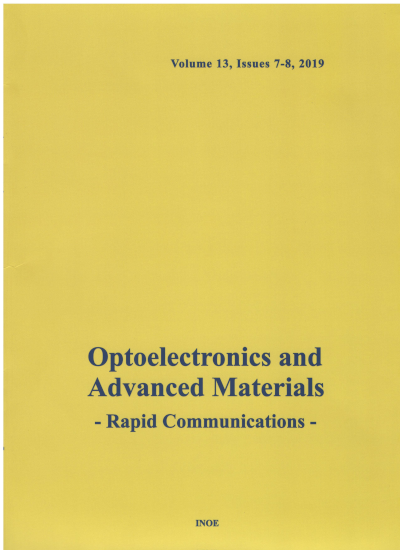Research progress on upconversion luminescence and temperature sensing performance based on rare earth-doped NaYF4: Er3+
ZHANG YI1,2,
ZHOU AIHUA2,
CAI YUANXUE1,2,*
,
MING CHENGGUO1,2,
PEI YUMIAO2
Affiliation
- Department of Chemistry, College of Science, Tianjin University of Science & Technology, Tianjin 300457, China
- Research Center for Photonics and Advanced Sensing Technology, College of Science, Tianjin University of Science & Technology, Tianjin 300457, China
Abstract
Rare earth Er³⁺ mono-doped upconverted sodium crystals were prepared, and the effects of the doping and the reaction time
on the structure, morphology and luminescence properties of the materials were investigated, and then these conditions
were optimized. The NaYF4: x%Er3+ has a hexagonal crystalline phase with homogeneous morphology. Under 980 nm
excitation (with a power of 2.0W) the optimal rare-earth-element doping ratio of NaYF4: 2%Er3+ has a good emission
spectrum with color coordinates (0.34, 0.56). The phosphor-dependent luminescence spectra were measured, and the
fluorescence intensity ratio(FIR) of its optical thermometer was calculated and fitted [1]. This experimental result lays the
foundation for the field of temperature probing of the upconversion luminescence.
Keywords
Upconversion luminescence, Temperature sensing, NaYF4
: x%Er3+.
Citation
ZHANG YI, ZHOU AIHUA, CAI YUANXUE, MING CHENGGUO, PEI YUMIAO, Research progress on upconversion luminescence and temperature sensing performance based on rare earth-doped NaYF4: Er3+, Optoelectronics and Advanced Materials - Rapid Communications, 19, 1-2, January-February 2025, pp.95-101 (2025).
Submitted at: Aug. 3, 2024
Accepted at: Feb. 3, 2025
